Which bulk floor is better: attention to the characteristics of the coating and its appearance
Self-leveling floors are self-leveling mixtures that are “poured” in liquid form onto the base and, when solidified, independently form an even horizontal surface. The composition of such mixtures may vary and this directly affects the appearance and functional features of the final surface. Therefore, consumers inevitably have the question of which of the bulk floors is better. Let's try to figure it out?
The choice of a bulk floor primarily depends on the intended purpose of the surface. You can divide all types of self-leveling mixtures into two types:
- cement-containing - used to level an existing base;
- polymer - which is the finish coating.
Polymer floors, in turn, are:
- polyurethane;
- epoxy;
- methyl methacrylate.
And now let's talk more about each of them.
Content
Cement bulk floors - self-leveling screeds
Cement self-leveling floors are not used as a topcoat; this is an alternative to conventional cementitious screeds for leveling the floor. The difference between this type of bulk floors and traditional screeds is the more liquid working consistency of the solution, which can spread on the floor and independently form an absolutely flat surface. In other words, cement self-leveling floors play the role of leveling screeds for decorative flooring: laminate, linoleum, carpet, etc.
Self-leveling cement mixtures are available in paper bags in the form of dry mixtures requiring mixing with water. The composition of such mixtures includes: cement, lime, fine sand, plasticizers.
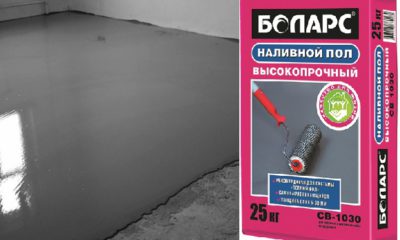
Advantages:
- high leveling properties;
- universality;
- resistance to low temperatures;
- excellent durability;
- durability;
- low price.
The disadvantages include low decorative properties and low chemical resistance.
Polyurethane bulk floors - "liquid linoleum"
Polyurethane bulk floors can most often be found among containers with “liquid linoleum”. This is due to the fact that polyurethane compositions, along with practicality, are also distinguished by high decorative properties. They are used with equal success both in residential premises and in production. Polyurethane floors can be found in apartments, offices, restaurants, children's centers, shops, sports complexes, car services, parking lots, in laboratories and factories.
You can read more about how to make a bulk floor yourself in the article:https://floor.expertexpro.com/en/pol-pokritiya/nalivnoi/delaem-nalivnoj-pol-svoimi-rukami.html. All the wisdom of coating device technology.

Huge scope polyurethane bulk floors owe their properties.Mixtures based on a polyurethane compound are particularly flexible, which other types of bulk floors cannot boast. This means that various shocks, mechanical impacts and even vibrations will not be able to harm them. Another important distinguishing feature of polyurethane floors is their resistance to chemical influences and aggressive environments, which allows them to be used in laboratories and chemical plants.
Advantages:
- high elasticity;
- resistance to chemical compounds (including household chemicals);
- strength;
- abrasion resistance;
- heat and noise insulation;
- heat resistance;
- simplicity in leaving;
- high decorative properties, wide color gamut, huge opportunities for design.
The disadvantages include the complexity of installation and the high price.
Epoxy based decorative coating
Epoxy floors incorporate epoxy resins and hardeners. Grasping, such a mixture forms an even and very solid base with predetermined decorative properties. Epoxy bulk floors do not pass moisture, do not collapse under the influence of household chemicals, acids and alkalis. This allows you to use them in pools, car washes, in chemical and food shops. Epoxy floors are completely safe, therefore they are recommended to be "poured" in residential premises, child care facilities, hospitals.
Despite its hardness, the epoxy surface is very fragile and inelastic. A metal object (such as a hammer) that has fallen to the floor can cause cracking. Therefore, epoxy floors are not advisable to apply in places subject to shock loads.
The cost of mixtures for bulk floors is quite high and the purchase of excess material can result in a significant amount. To determine the consumption of the mixture and eliminate unnecessary waste, it is useful to read the following article:https://floor.expertexpro.com/en/pol-pokritiya/nalivnoi/nalivnoj-pol-rasxod-smesi.html.

Advantages:
- high strength;
- abrasion resistance;
- resistance to chemical compounds and moisture;
- excellent decorative properties.
The disadvantages include fragility and high price.
Methyl methacrylate bulk floors
Methyl methacrylate mixtures are used to form floors in industrial premises. Compared to polyurethane analogues, they are much more wear-resistant, and compared to epoxy analogues they are more chemically resistant. They are not subject to abrasion, do not scratch, and withstand mechanical stresses associated with the movement of heavy machinery and vehicles.

Methyl methacrylate self-leveling floors dry very quickly, so they can be installed in production rooms without stopping the production process. Complete curing of the coating occurs in less than an hour, and a set of final strength characteristics in two hours. The solidification of the liquid composition is accompanied by a pungent odor. This is unpleasant, but it can be solved with the help of high-quality ventilation.
These floors have many advantages: increased strength, hardness, chemical resistance, moisture resistance and high speed of installation work. As disadvantages, an unpleasant odor of a liquid methyl methacrylate composition can be noted.
Violation of the technology of the device of the bulk floor can lead to defects and the need for repair or removal of the floor covering. About the most common problems, the causes of their occurrence and methods of elimination, read in our material:https://floor.expertexpro.com/en/pol-pokritiya/nalivnoi/defekty-nalivnogo-pola.html.
Designer delights of bulk floors
Choosing bulk floors, the consumer pays attention not only to the functional features of bulk floors, but also to their appearance. The decorative properties of cement and methyl methacrylate floors do not sparkle with refinements, however, for them this does not matter. Epoxy and polyurethane compounds are a completely different matter. There is plenty to choose from.
On sale there are polymeric self-leveling compositions of many colors, with which you can create monophonic bulk floors. In addition, there are several ways to give a coating a designer originality.
1. Using decorative chips
Chips are colored particles of paint of different shapes and sizes. They are added to the polymer mixture for bulk floors, giving it a resemblance to natural materials: granite, marble, etc.
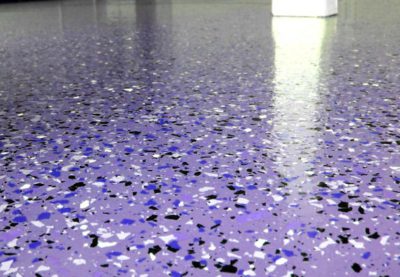
2. Coloring of a bulk floor with polymer paints
For the artistic effect, you can apply polymer paints that are applied to the base layer of the material, and then varnished.
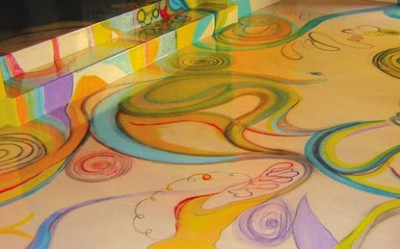
3. Transparent floors with filling
Often, designers use this technique: various volumetric objects are poured with a transparent epoxy or polyurethane mixture. For example, shells, coins, pebbles.
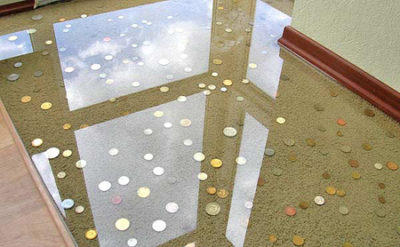
4. 3D effect
The most interesting option of bulk floors, creating a complete presence 3D image on the floor. This coating is created by laying a picture with a realistic image under a transparent polymer coating.
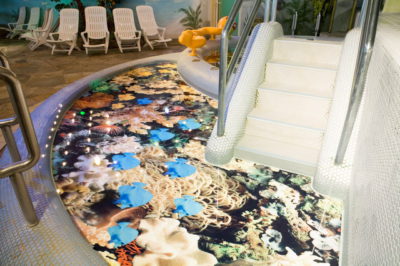
When choosing a bulk floor, pay attention to both the aesthetics of the material and its practical features. For example, for residential premises there is no need to use high-strength compounds for industrial use. As well as for storage, do not overpay for the 3D effect.

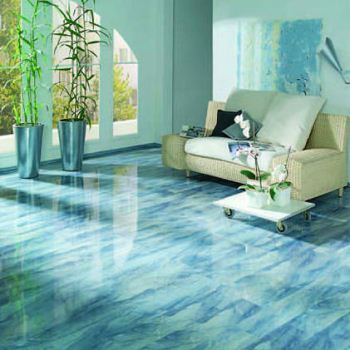


2 comments